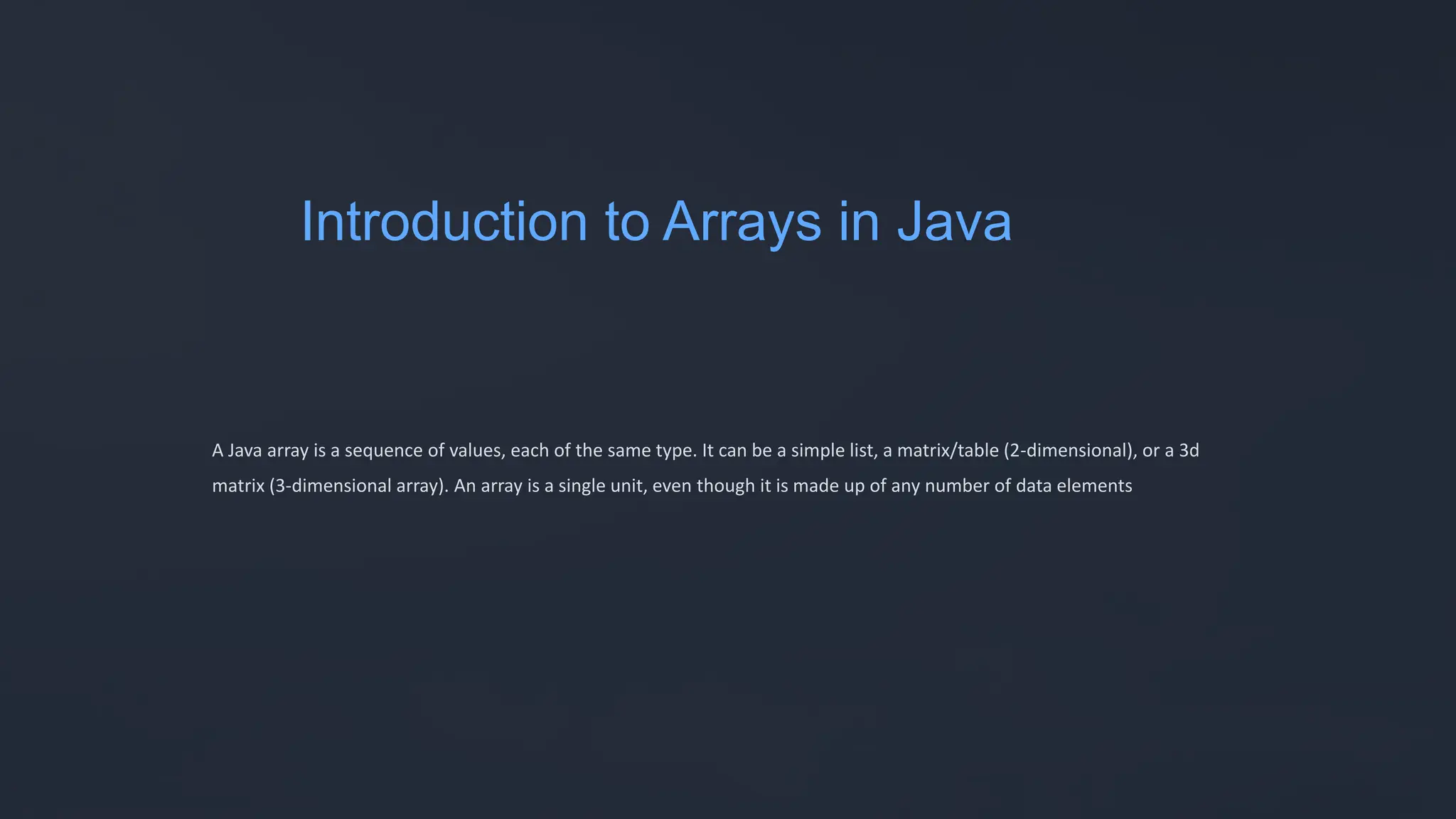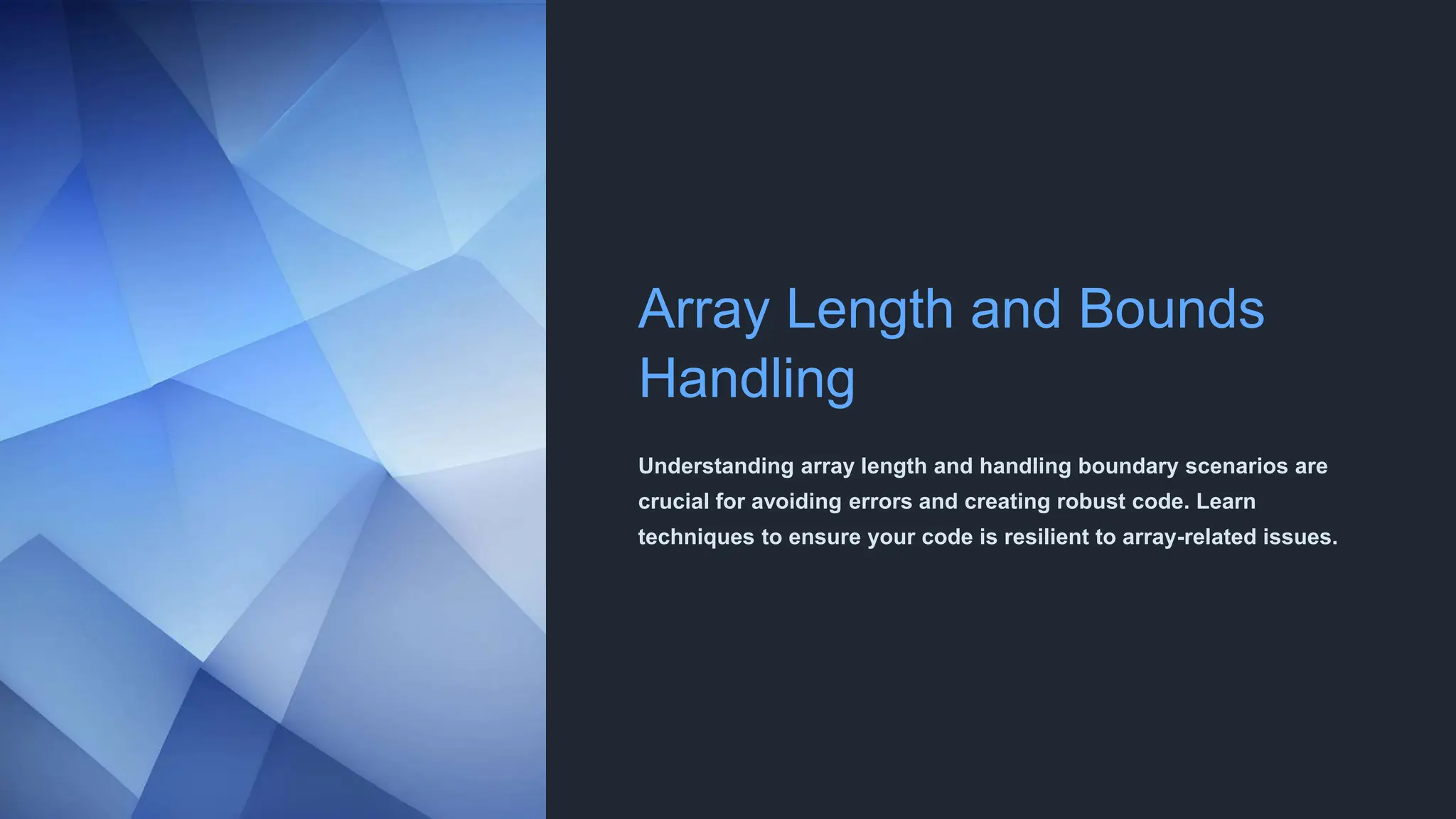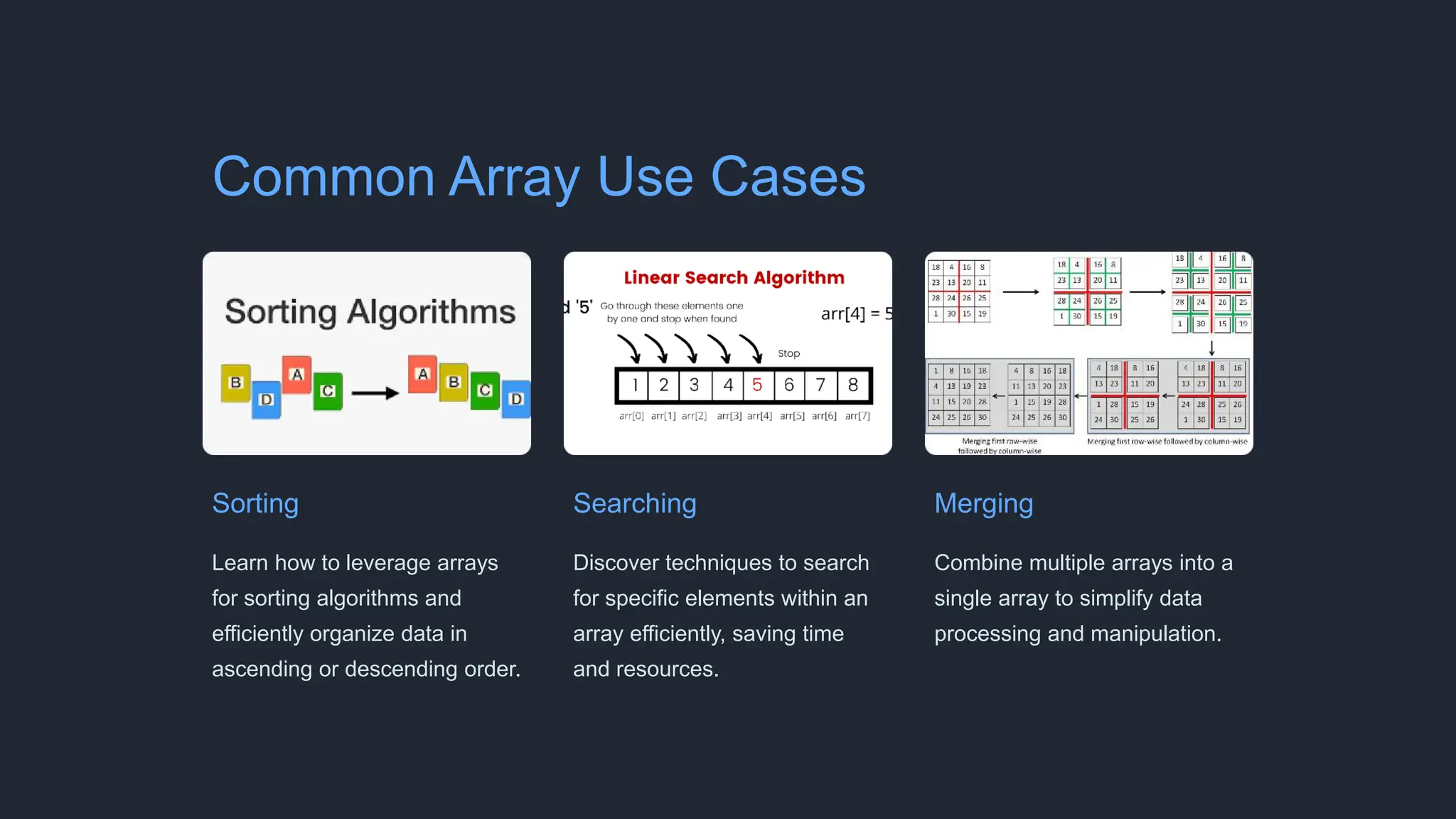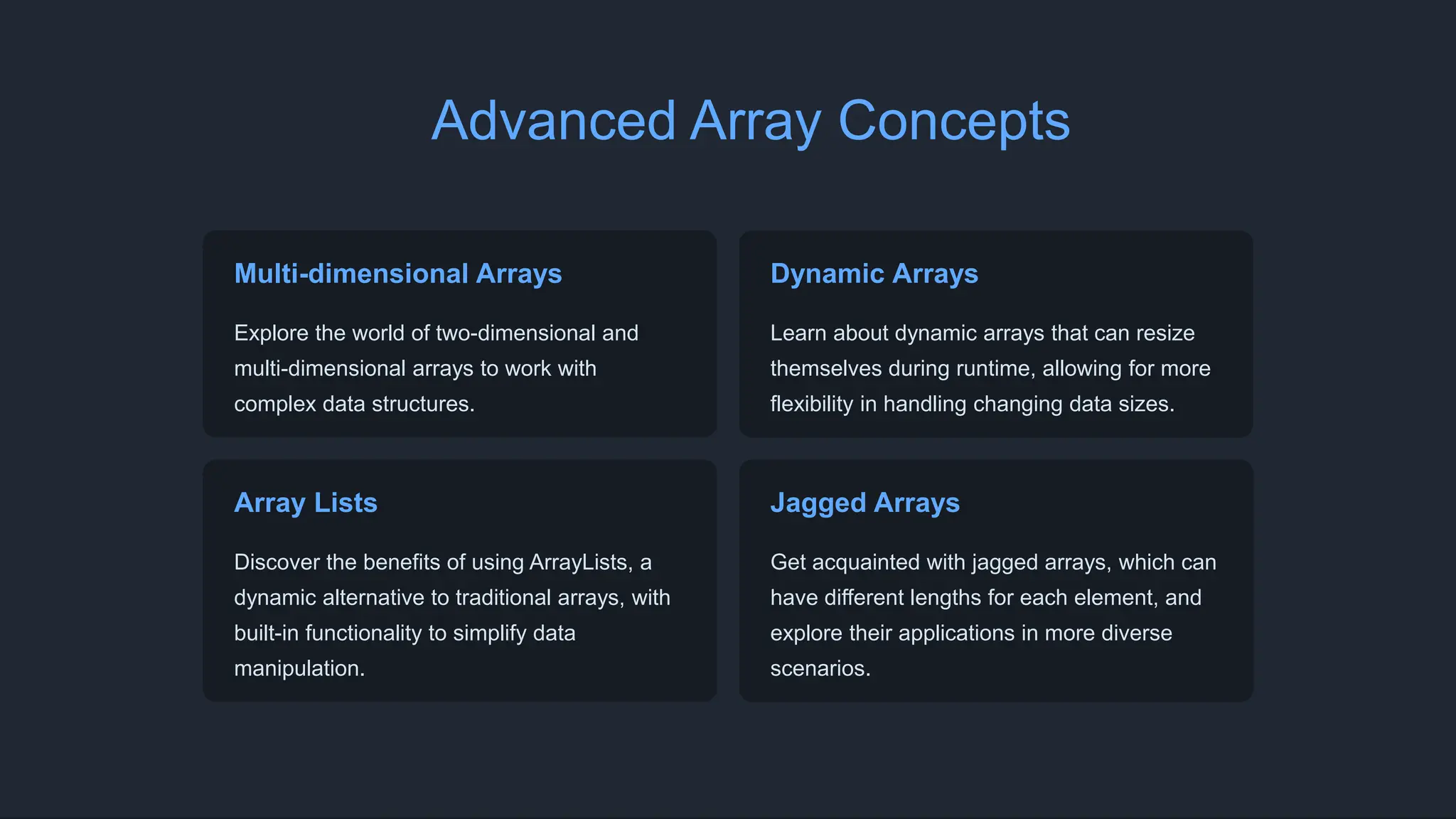This document provides an overview of arrays in Java, including their declaration, initialization, and methods for accessing and modifying elements. It covers topics such as array length, boundary handling, and various manipulation techniques like sorting and searching. Additionally, it explores advanced concepts such as multi-dimensional arrays, dynamic arrays, array lists, and jagged arrays.







